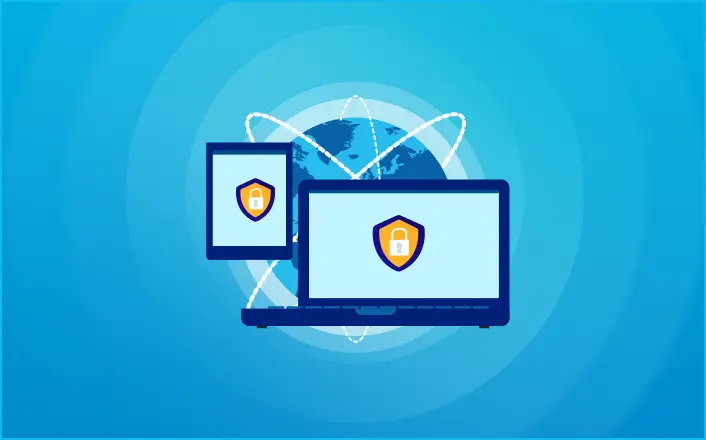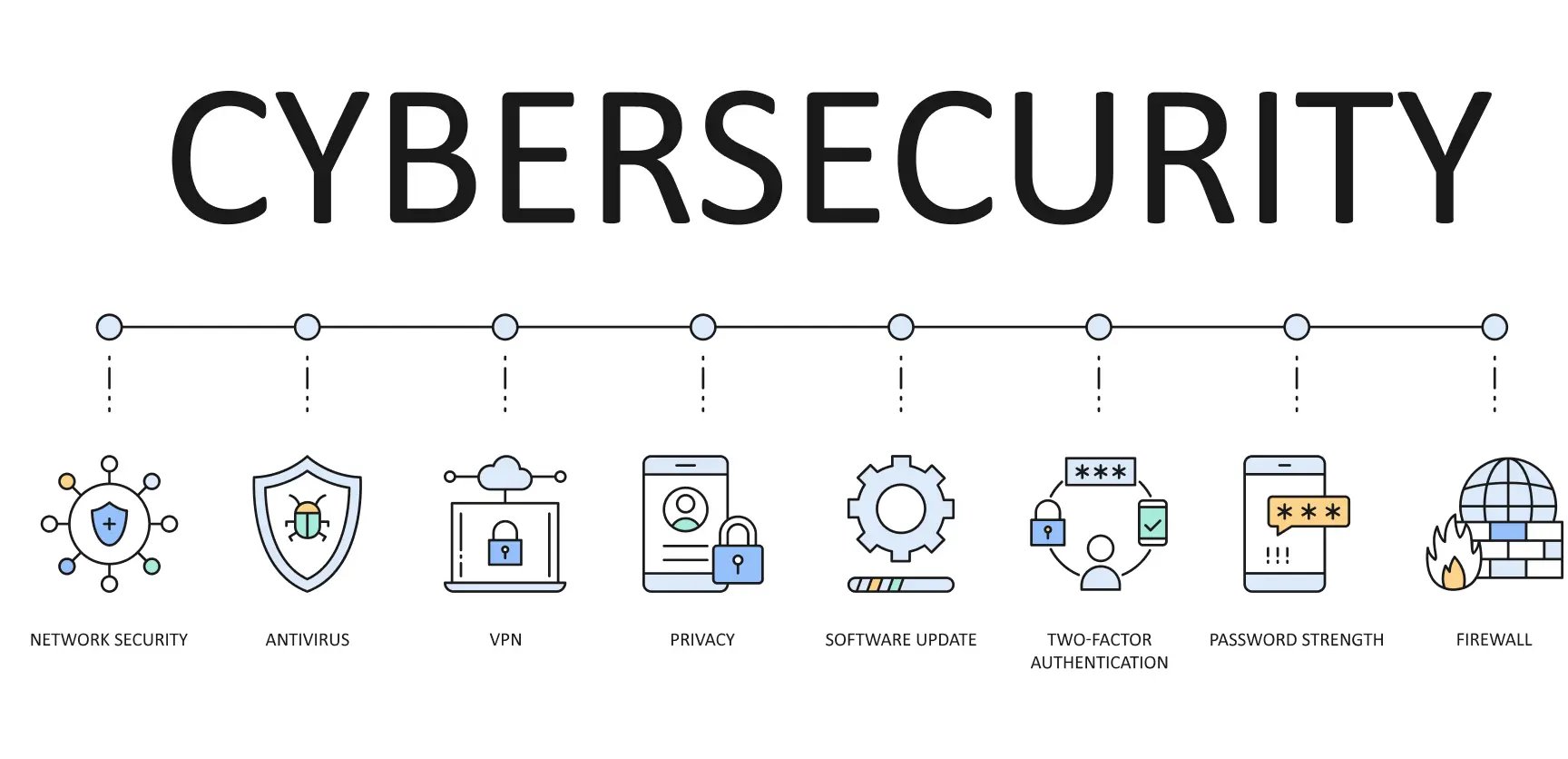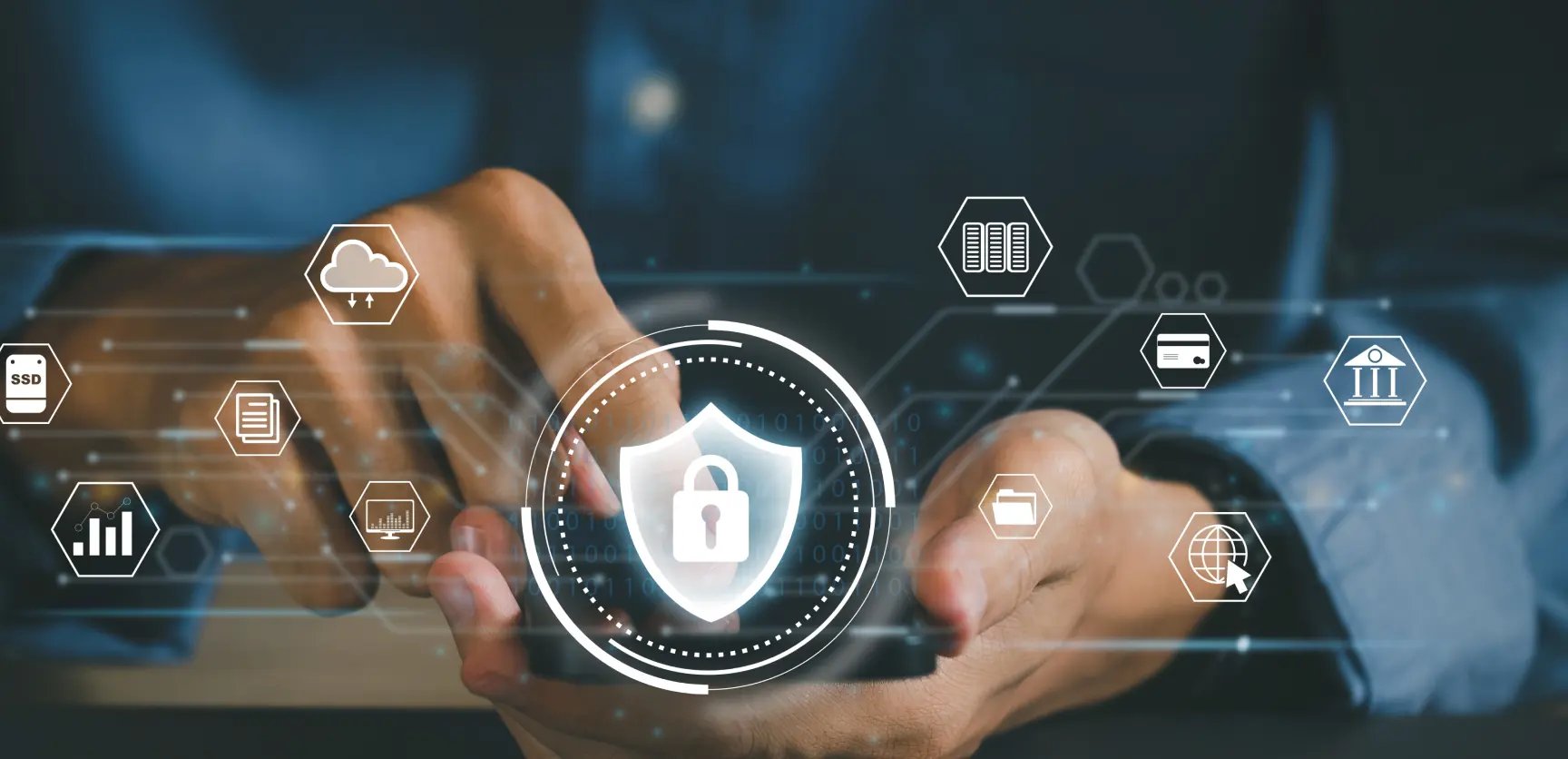- Product
-
Solution
-
By Industry
Cybersecurity solutions tailored to your industry’s needs.
-
- Resources
-
Books
Our ultimate guides and playbooks
Solution Briefs
Overview of PureDome’s functionality
-
Quizzes
Assess your cybersecurity readiness
Case Studies
PureDome customer success stories
Newsletter
Subscribe to the PureDome newsletter
-
- About Us
- Partner
- Pricing
- Download
Safeguarding SMBs in North America: A Comprehensive Guide to Cybersecurity Preparedness
-
Sharmeen Saleem
-
30 Jan 2024
- 6 min read


In today's rapidly changing digital landscape, small businesses in every industry must be fully aware of the ever-present cybersecurity threats. Cybercriminals are continuously evolving their techniques, making it more critical than ever to establish a solid cybersecurity plan—especially with the surge in cyber threats due to the impact of COVID-19. The rise of remote work has exposed vulnerabilities in the infrastructure of many companies, making the need for a comprehensive security strategy even more pressing.
While it might seem logical to assume that cybercriminals would target larger corporations, the reality is quite different. In truth, nearly 70% of small businesses fall victim to cyber-attacks, underscoring the widespread risk. Without a well-structured cybersecurity plan, these businesses are left in a precarious position, facing potentially devastating consequences.
In the current landscape, cybercrime has expanded its reach, increasing the frequency and complexity of cyberattacks. Managing these incidents poses significant challenges, including financial losses and damage to reputation. While this holds for all types of organizations, the impact is even more pronounced for small and midsize businesses (SMBs).
Cybercriminals often view small businesses and midsize/midmarket companies as prime targets because they lack the resources to prevent attacks and effectively navigate the aftermath.
Overview of Cyberattacks on Small and Medium Enterprises
While cyberattacks targeting small and medium-sized enterprises (SMEs) might not always grab headlines, they pose a significant threat that affects the livelihoods of professionals and the individuals they serve. These attacks can have a more pronounced impact on SMEs than on larger entities due to the absence of comprehensive backup and mitigation services commonly found in larger organizations.
Notably, in 2021, cyberattacks on small businesses held the potential for severe harm due to the rise in automated attacks and supply-chain breaches targeting their IT service providers.
Cyberattacks on small businesses have demonstrated that hackers set their sights on SMEs because they frequently employ free cybersecurity tools intended for consumer protection rather than tools suited for businesses. This practice exposes them to an array of attacks that might be better detected by more robust cybersecurity systems in larger corporations. The encouraging news is that SMEs can adopt comparable cybersecurity tools major enterprises use to safeguard their workforce, leadership, clientele, and sensitive data.
What are the Most Common Cyberattack Types Affecting SMEs?

SMEs encounter a range of cyberattacks, including malware, phishing, ransomware, and insider threats. Adequate email security can often fend off a substantial portion of external attacks, particularly those utilizing malicious links or content through email. Nevertheless, certain email-based attacks, such as phishing scams, can be more challenging for security systems to identify.
Hackers, motivated by financial gain, corporate disruption, or even the allure of a challenge, frequently employ the following attack methods:
Viruses and Malware
Viruses propagate through user actions, differing from worms that self-replicate. The umbrella term "malware" is more accurate, referring to any malicious software employed in attacks. Despite being one of the oldest forms of malware, viruses remain prevalent. Hackers can embed viruses in seemingly innocuous files, enabling them to evade detection by multiple users within an SME.
Insider Threats
Insider attacks involve disgruntled employees, profit-seekers, or those engaged in cyber espionage using their work privileges to breach sensitive network areas. As some employees access customer payment data, confidential corporate information, and sensitive communications, insider threats can severely cripple or tarnish a company's reputation.
Human Error
Human errors can inadvertently lead to insider threats. Inadequate protection of access credentials can allow hackers to gain unauthorized access to network segments, workstations, or devices. Minor oversights can result in significant consequences, particularly when hackers exploit the stolen credentials' knowledge of the network infrastructure.
Ransomware
Ransomware attacks entail hackers seizing control of a user's computer and demanding payment to restore access. Ransomware can affect various devices, including servers, making recovery extremely challenging even if the ransom is paid.
Phishing
Phishing attacks manipulate users into divulging sensitive information like credentials, addresses, and payment details. These attacks exploit fear, enticing offers, or counterfeit websites designed to harvest data, often via email.
Distributed Denial of Service (DDoS)
Attackers overwhelm web servers with a flood of fake requests, rendering the server unable to serve legitimate users due to excessive processing demands.
Botnets
Botnets are automated tools comprising internet-connected devices running bots programmed to infiltrate systems. Bots can mimic human actions, execute commands for data theft or spam distribution, and provide attackers access to networks and devices.
Cloud Hijacking
Cloud hijacking involves the intrusion of a third party into cloud computing systems. Once these hackers access an organization's cloud infrastructure, they attempt to reconfigure the underlying code to manipulate sensitive information, communications, and other data, aiming to extend their control over the entire cloud environment. Additionally, cybercriminals exploit this opportunity to orchestrate phishing campaigns, leading to various detrimental consequences such as data leaks and financial losses.
Software Patching
One of the prevalent cybersecurity risks for businesses is outdated software and unpatched vulnerabilities. Neglecting the maintenance of software patches exposes businesses to a range of security vulnerabilities. When malicious actors become aware of software vulnerabilities, they exploit these weaknesses to launch cyberattacks.
Deepfakes
Deepfakes create counterfeit versions of organizations to deceive unsuspecting customers and gain unauthorized access to an enterprise's sensitive information. This tactic also contributes to an advanced phishing attack, where hackers manipulate an individual's or CEO's reputation to issue fraudulent instructions to employees.
This cyberattack has been deployed against individuals and organizations over the past few years. It relies on AI technology that utilizes existing voice recordings, photos, or videos to manipulate an individual's or organization's image, fabricating false actions or speech.
Why Are SMEs Prone to Cybersecurity Threats?

SMEs face heightened vulnerability to cyberattacks due to possessing similar information, customer data, and digital infrastructure that attract cybercriminals targeting larger corporations. For instance, numerous small businesses store substantial volumes of customer payment details, which, if breached, can yield significant gains for hackers—either through direct exploitation for quick profits or by vending the data to other malicious actors.
Diverse forms of cyberattacks target SMEs, with specific methods prevailing more frequently. In numerous instances, hackers employ tactics akin to those targeting larger enterprises. This is mainly because hackers sometimes execute identical attack methodologies across multiple entities by replicating malicious code instead of tailoring distinct tools for different business types.
This situation amplifies the challenge of cyber threats for small and medium businesses, chiefly because the attack techniques are as sophisticated as those deployed against larger corporations. The replication of attacks also empowers cybercriminals to expedite their assaults. Consequently, smaller businesses are susceptible to experiencing a barrage of intricate attacks.
Cybersecurity for SMEs: Best Practices
Employing best practices to avert cyberattacks on SMEs predominantly involves adopting a proactive stance before any threats compromise your system. By adequately preparing your workforce and systems, you can prevent breaches or minimize the recovery effort required if one occurs.
Educate Your Workforce
Equipping your employees with insights into the latest threats and tactics positions them as pivotal contributors to your cybersecurity strategy. Often, employees need to learn how threats manifest, appropriate response procedures upon detecting an attack, and their role in prevention and recovery. Training initiatives can effectively address these gaps.
Perform a Security Evaluation
Conducting a comprehensive security assessment entails an open and transparent evaluation of the robustness of your network defenses. This process entails identifying potential vulnerabilities encompassing employees, applications, and practices that might weaken your security posture.
Safeguard Remote Staff Using a VPN
Shielding remote workers involves employing a virtual private network (VPN) that encrypts all data transmitted to and from your network. This ensures that any intercepted data would appear as unintelligible text even if their connection occurs over a public and potentially compromised network. Without the decryption key, attackers cannot utilize the stolen data.
Fortify Your Networks
Strengthening your networks guarantees that only authorized individuals possessing proper credentials can access sensitive information and devices. The more stringent your access protocols, the lower the likelihood of encountering a breach.
Employ and Maintain Updated Antivirus Software
Opt for premium antivirus software, typically surpassing the capabilities of free versions. Regular updates ensure you possess the latest safeguards against evolving attack vectors.
Implement Multi-Factor Authentication (MFA)
Employing multi-factor authentication (MFA) necessitates users to furnish multiple sets of credentials to verify their identity. This is a hurdle for hackers armed only with basic information such as usernames and passwords, preventing unauthorized access.
Utilize Robust Passwords
Frequently, employees, overwhelmed by online accounts and passwords, opt for easily memorable choices that hackers can exploit. Crafting solid and intricate passwords involving characters, letters, and numbers can serve as a potent deterrent against opportunistic attackers.
Activate Advanced Firewall Measures
Deploying a next-generation firewall (NGFW) with cutting-edge threat intelligence allows you to outmaneuver hackers. The NGFW scrutinizes incoming and outgoing data, identifying packets possibly harboring threats that are automatically discarded. This approach safeguards your network and its users.
Regularly Back Up Your Data
Consistently performing strategic backups represents a potent defense against downtime resulting from cyberattacks. You can swiftly regain control of your system by reverting to the latest backup. Frequent backups can even mitigate the impact of a ransomware attack.
How to Improve Your Overall Cyber Defenses?
Strengthening your overall cyber defenses is paramount in the ever-evolving digital security landscape. As cyber threats grow more sophisticated, fortifying your organization's strategies to safeguard sensitive data and critical operations becomes an ongoing necessity. Incorporating a VPN solution for small businesses emerges as a pivotal measure.
By establishing a robust, encrypted tunnel for data transmission, a VPN for companies provides a formidable shield against potential breaches, preserving the confidentiality and integrity of your communications.
Furthermore, secure remote access for businesses adds an extra layer of resilience. This approach permits authorized personnel to seamlessly connect to your network remotely while minimizing the risk of unauthorized intrusion.
By adopting these proactive measures and maintaining against the evolving threat landscape, your business can confidently navigate the digital domain, ensuring a secure and reliable path forward.
Frequently Asked Questions
Why are small businesses vulnerable to cyberattacks?
Small businesses often need more robust resources for comprehensive cybersecurity measures, making them appealing targets. Limited awareness, inadequate training, outdated technology, and third-party risks contribute to their vulnerability.
What percentage of cyberattacks are against small businesses?
Approximately 43% to 60% of all cyberattacks are directed at small businesses, though the exact figure varies. Their vulnerabilities and potential impact make them attractive targets for cybercriminals.
How do cyberattacks affect SMBs?
Cyberattacks on SMBs lead to financial losses, damage to reputation, operational disruptions, legal penalties, data loss, intellectual property theft, and resource drain. Prioritizing cybersecurity is crucial for minimizing these adverse effects.
Stay up to date with the latest cybersecurity insights and best practices
Get the latest information, stories, and resources in your inbox. Subscribe for monthly updates.
Securing 1000+ Businesses Across The World